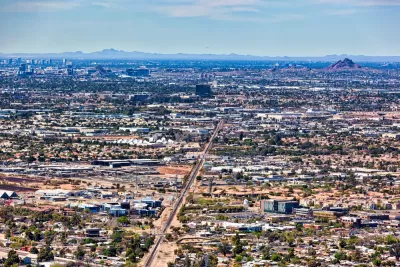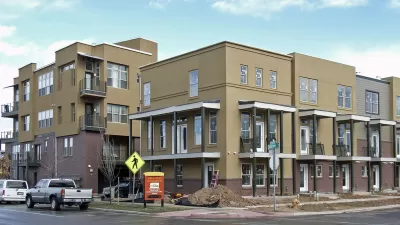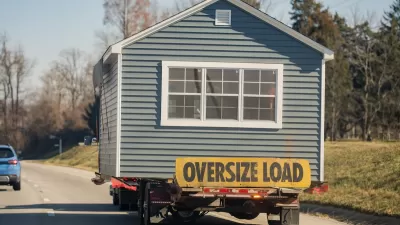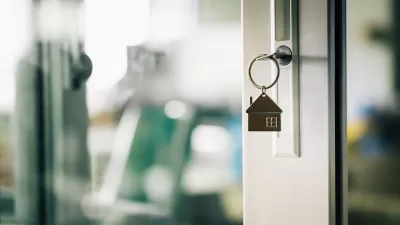Redlined for decades, south Phoenix is experiencing a resurgence that could push local residents even farther out as housing costs spike.

“Housing discrimination, including disastrous government-supported redlining is hurting south Phoenix neighborhoods more than 50 years after it was struck down as illegal and predatory,” write Catherine Reagor and Megan Taros.
According to the authors, south Phoenix neighborhoods redlined by federal government maps in the 1930s continue to see low homeownership rates among Black and Latino residents. “And by keeping the area’s residents from getting mortgages to buy homes for so long, the discriminatory policies kept many families from building the home equity that translates to savings and wealth.”
Now, the area is “seeing some of the biggest jumps in rents and home prices in the Valley,” making it impossible for low-income residents to afford homeownership there now. Like other urban communities around the country, south Phoenix also suffered the effects of freeway construction and a new airport that broke up neighborhoods and reduced mobility for local residents.
A report from ASU’s Morrison Institute for Public Policy documents the lasting effects of discriminatory policies. “Although some policies have tried to reverse these practices and racial integration has drastically increased, the past still weighs on the present housing landscape of Arizona, the report found.”
The source article details the findings of the report, including statistics and maps that show the correlation between historically redlined areas and current homeownership trends, as well as current efforts on the part of grassroots organizations and policymakers to reverse the effects of historically racist policies, even as property values in south Phoenix rise sharply.
FULL STORY: Institutionalized racism of the past': Discriminatory housing practices resound in south Phoenix today

Maui's Vacation Rental Debate Turns Ugly
Verbal attacks, misinformation campaigns and fistfights plague a high-stakes debate to convert thousands of vacation rentals into long-term housing.

Planetizen Federal Action Tracker
A weekly monitor of how Trump’s orders and actions are impacting planners and planning in America.

Chicago’s Ghost Rails
Just beneath the surface of the modern city lie the remnants of its expansive early 20th-century streetcar system.

Bend, Oregon Zoning Reforms Prioritize Small-Scale Housing
The city altered its zoning code to allow multi-family housing and eliminated parking mandates citywide.

Amtrak Cutting Jobs, Funding to High-Speed Rail
The agency plans to cut 10 percent of its workforce and has confirmed it will not fund new high-speed rail projects.

LA Denies Basic Services to Unhoused Residents
The city has repeatedly failed to respond to requests for trash pickup at encampment sites, and eliminated a program that provided mobile showers and toilets.
Urban Design for Planners 1: Software Tools
This six-course series explores essential urban design concepts using open source software and equips planners with the tools they need to participate fully in the urban design process.
Planning for Universal Design
Learn the tools for implementing Universal Design in planning regulations.
planning NEXT
Appalachian Highlands Housing Partners
Mpact (founded as Rail~Volution)
City of Camden Redevelopment Agency
City of Astoria
City of Portland
City of Laramie





























